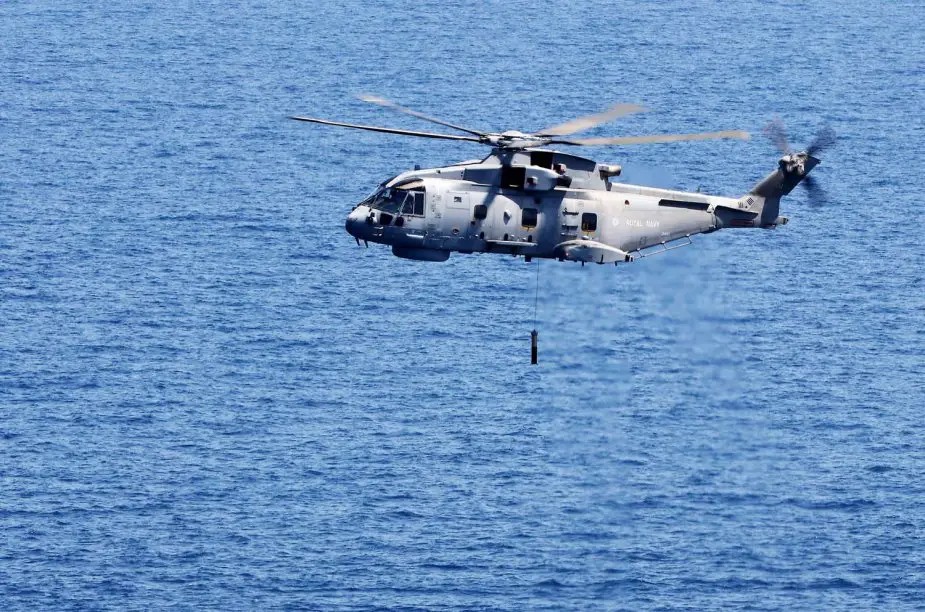Breaking news
Royal Navy awards $70 million contract to Leonardo for uncrewed helicopter.
According to information published by the UK MoD on July 25, 2022, the Royal Navy is moving a step closer to operating crewless helicopters. The Ministry of Defence has awarded a £60 million contract to Leonardo to design and develop a cutting-edge uncrewed helicopter.
Follow Navy Recognition on Google News at this link
 Royal Navy's helicopter Merlin MK2 conducting anti-submarine operations (Picture source: UK MoD)
Royal Navy's helicopter Merlin MK2 conducting anti-submarine operations (Picture source: UK MoD)
The three-tonne demonstrator – less than a third of the weight of a Merlin helicopter - could provide an innovative alternative to existing aircraft for tracking adversary submarines.
Trials will test the capability of the aircraft to drop “sonobuoys” – small tube-shaped buoys that track and communicate submarine activity – enabling the aircraft to alert a crewed helicopter and call for support if a submarine is located.
Cost-effective to run, the platform will also reduce the exposure of Royal Navy crews to potential threats.
Leonardo – the firm behind the Wildcat and Merlins which are the mainstay of Fleet Air Arm operations – will test the demonstrator on lengthy and demanding anti-submarine warfare patrols – currently performed by Merlin Mk2 helicopters – but other potential uses will also be investigated, including evacuating casualties.
Turning to drone helicopters would mean crews wouldn’t need to swap due to fatigue, fuel costs could be reduced, while the crewed aircraft could be used for other critical tasks.
Proteus – named after a mythological Greek god of the sea – is due to take its first flight in 2025 and, once airborne, will generate evidence helping decision-making when it comes to future investment in the Royal Navy and Fleet Air Arm.
If successful, the new aircraft would provide a platform capable of delivering improved surveillance and intelligence, enabling crewed Royal Navy helicopters to re-deploy on alternative missions if required and bolstering UK defence capability.
Capable of carrying a large payload, combined with the ability to operate in harsh environmental conditions, the aircraft could also demonstrate its utility across a range of requirements.
Beyond anti-submarine warfare, the project will address other potential uses including ship-to-ship resupply and casualty evacuation.
The four-year contract will deliver a demonstrator as part of the existing UK Defence Rotary Strategy, setting out plans to improve and upgrade the readiness of UK Defence’s key helicopter capabilities.



























